"Why Are There So Many Blue Planter Pots Than Other Colors "
Disclosure: We may get commissions for purchases made through links in this post.
The colors and styles of your planters and pots can make a huge difference in how your garden looks. Even if you have only indoor plants, these items can have a huge visual impact on the rooms that they are in. So what's the best color for these planters and pots? Can you mix and match them, or should they all be the same? We researched this, and in this post, we will discuss various options.
The best color for your pots and planters depends on your personal preference and design style. You should also consider the current layout of your home if you have indoor plants. If you have an outside garden, consider the color of the existing plants and if you want the pot to complement their colors or contrast them.
You'll also want to consider the overall feel you wish your home or outside garden to have. Light-colored pots such as orange, beige, and yellow can make your home or garden look vibrant and full of energy. In contrast, dark-colored pots such as blue, green, or gray can give off a more relaxed and demure feel. There isn't a right or wrong choice when it comes to choosing the style and colors of your planters and pots. However, it's worth taking some time to consider various factors before going out to purchase new containers. Continue reading to learn more about how to walk through deciding which pots and designs will work best for home and garden.
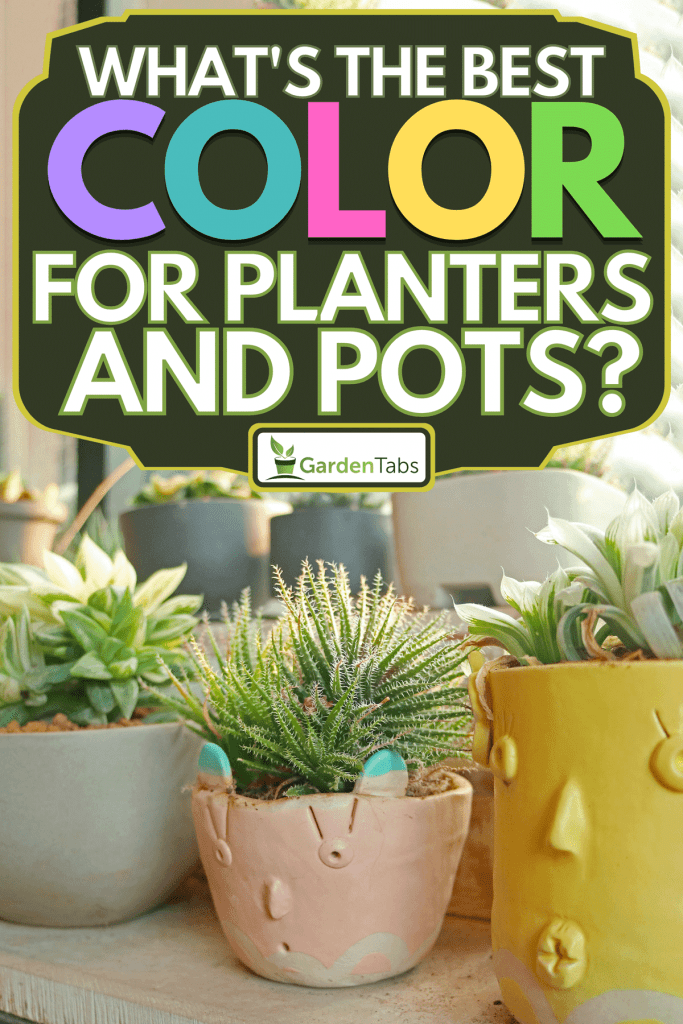
How do you choose a planter color?
You may be surprised to learn that planter colors can have a significant impact on your plant's growth. The color of the planter can affect the temperature of the soil and how much sunlight it absorbs. For example, dark-colored planters, such as blue and black, will cause the soil to become more heated than lighter colors such as white or beige.
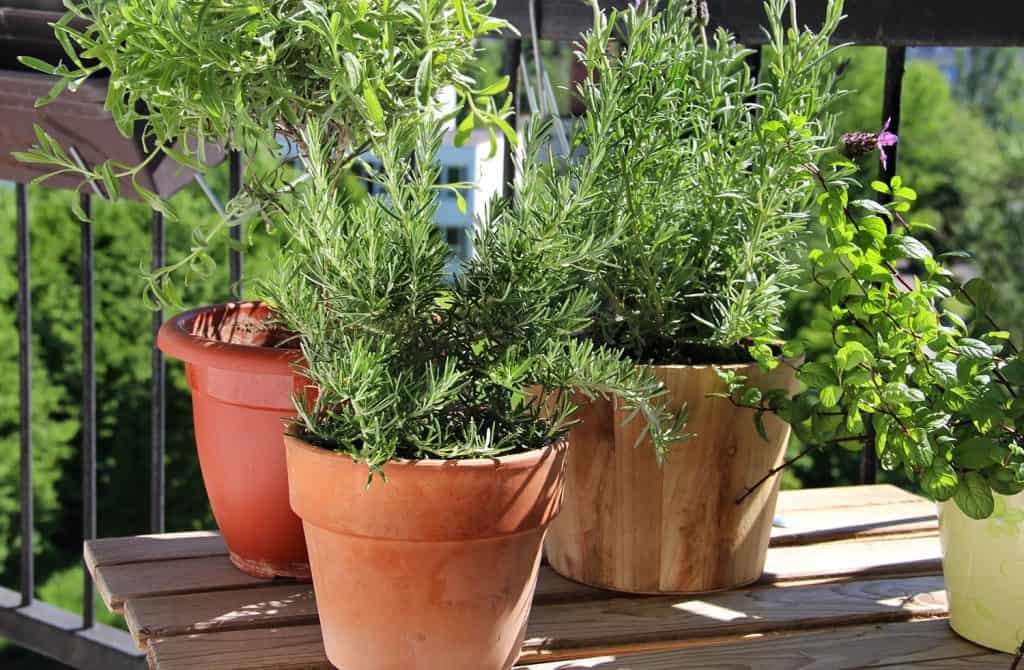
It's the same reason that most people typically wear lighter colors and the spring and summer and darker shades in the fall. Darker fabrics and materials absorb and retain heat more than lighter ones.
So to say, if you're wondering what color to use for your plants, consider where it'll go in your garden. Let's take a look at common colors used for planters.

Find this plant thermometer on Amazon.
White
White containers are great because they're able to reflect a lot of natural light without making your room or garden look too loud. They can also brighten up other darker-colored containers and give a sense of tranquility to any room.
Though these planters aren't particularly striking, they can help open up a space and create a pleasant feeling of newness and freshness. Combine these containers with darker colors to help provide a restful look to your garden. Or match them with darker shades to create a more modern or bold feel.

Find this white planter on Amazon.
Beige, Tan, and Brown
These neutral colors are probably the most common ones used in home and commercial gardens. They reflect ample sunlight and don't allow the soil to become too warm. Earthy colors such as beige and tan can bring a sense of peace and tranquility to your garden.
They also go with almost any color and can blend well with modern or traditional settings. If you're gravitating more towards neutral colors, try planting them and the surrounding areas of the garden.
If you want to create a more eye-catching look with these hues, plant bolder colors such as greens, oranges, and light blues in the middle of the garden.

Check out these beige pots on Amazon.
Green and Blue
Speaking of greens and blues, these are probably the most versatile planter and pot colors. They can go with almost any decor and be matched with multiple tones. They're perfect for adding coolness and a sense of relaxation to your garden and can be paired with vivid colors such as red and yellow to create a more lively feel.
You'll want to exercise caution with these colors as darker tones can absorb more sunlight and may increase your plant's soil temperature. When using these planters outside for the first time, plant a thermometer is in the pot to keep a watchful eye on the soil temperatures--especially in warmer months.

Learn more about this blue pot set on Amazon.
Yellow
Yellow planters can create an exciting look in your garden. Yellow often makes people think of spring and summertime, adding a warm and fuzzy feeling when they enter your home. You can combine these pots with darker colors such as green and purple to help liven up your garden space.
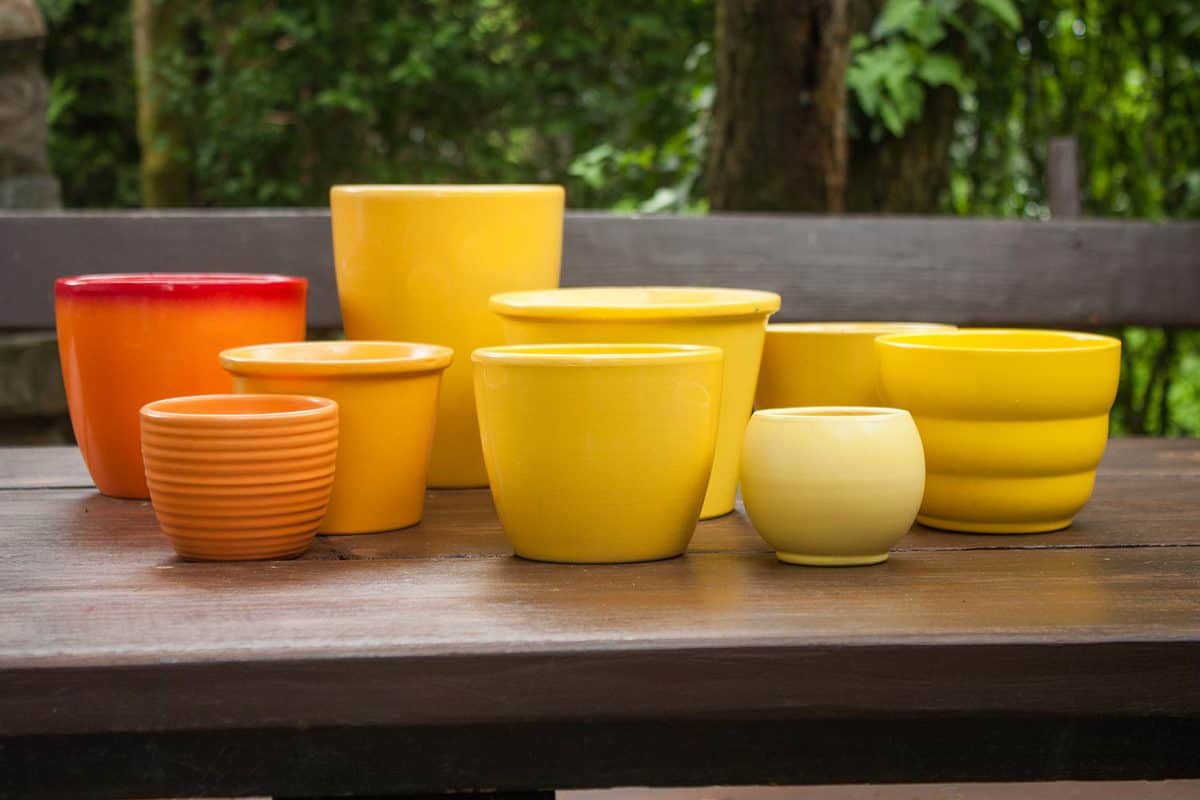
They can create a more subdued atmosphere when combined with medium-toned colors such as lavender or teal. Or, you can go with a classic look and combine them with white and orange tones.

Check out these yellow planter set on Amazon.
Red and Pink
If you want to give your home or garden an eclectic feel, red and pink tones can help with this. They work wonderfully in southwestern-styled themes and can easily be combined with lighter-colored pots. You'll find that these tones tend to bring a romantic color to your garden, and they are perfect for opening up spaces that may be small and tight or have little lighting.

Read more about this red planter on Amazon.
Purple
Purple may not be one of the first colors you consider for your planter, but it has its place in almost any garden. Purple combined with lighter colors such as yellow or pink can create a vibrant look.
Lighter purple tones can also soften the contrast between darker colors such as blue, burgundy, or green. The versatility of purple planters makes them an excellent choice for large and small garden spaces.

Read more about these small purple planters on Amazon.
Black
And lastly, we have black. Black is the strongest color that you can add to your garden, which is why it's not used that often. However, if you want to add a bit of a dramatic flair to your garden space, it can work. You can also pair black with neutral or lighter tone colors to accentuate light-colored plants and spaces.
It's best to use black planters indoors rather than outdoors due to their ability to retain sunlight. You'll also want to avoid using these pots and tight spaces, as they can make the room look smaller and more closed in. If you use them in these spaces, be sure that there is enough natural light to create a bit of contrast.

Check out these black outdoor pots on Amazon.
Should all your planters match in color? Style?
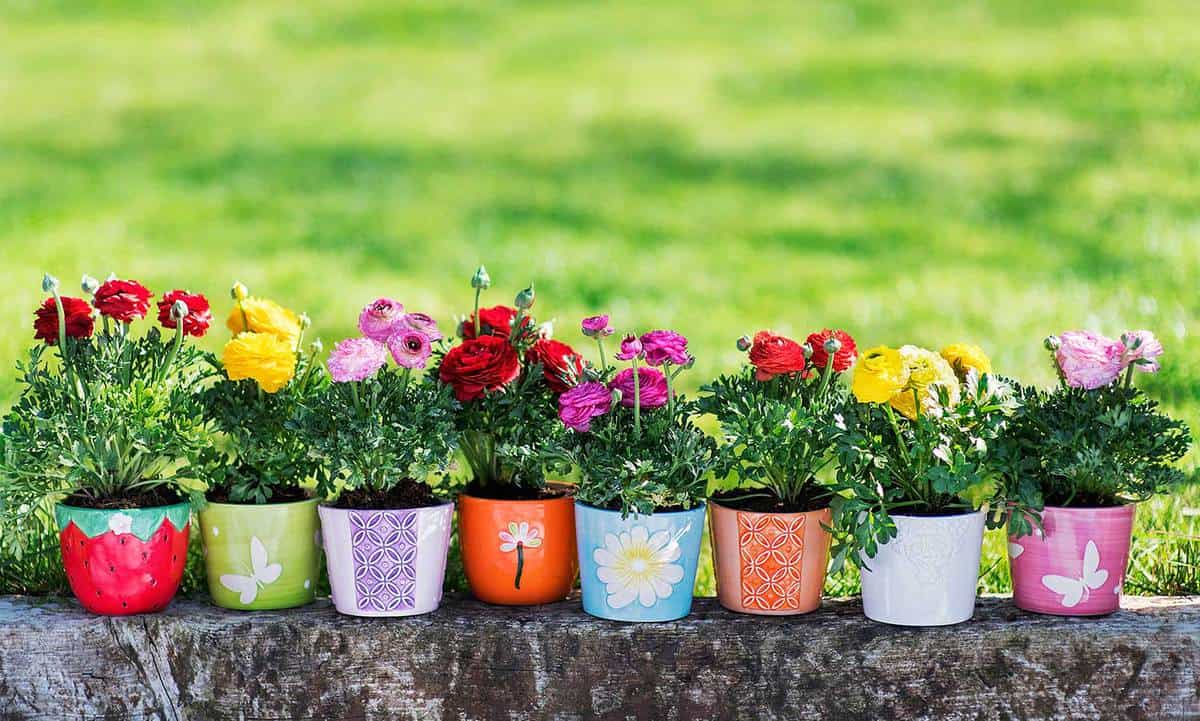
It depends on the type of plants you have and the look you want your garden to have. Many gardeners choose to match their potted plants, but this isn't a set rule. As mentioned earlier, the color of your planters can affect the soil, so it's essential to consider this as well.
For example, if you have plants that prefer cool and moist soil, you may not want to use dark planters in open outdoor gardens during the warmer months of the year. However, it's essential to make sure that the plants' color and the planter's color go hand-in-hand.
You can use contrasting colors or ones that complement the shade of the plant. For example, if your plant has bright red flowers, you may want to consider a green, yellow, or teal-colored planter to help the flowers stand out during the blooming season.
However, you will find that most gardeners tend to go with either one specific planter style or a mixture of different styles to create a more modern or eclectic look. Also, some planters can add a bit of texture to the garden, which can help bring out specific colors and make it more pleasing to the eye.
It's also helpful to look at pictures of other gardens to get ideas for the look you want. Seeing different color combinations, planter styles, and textures can help you gain more insight into what's possible and what may work for your space specifically.
How do you arrange a container garden?
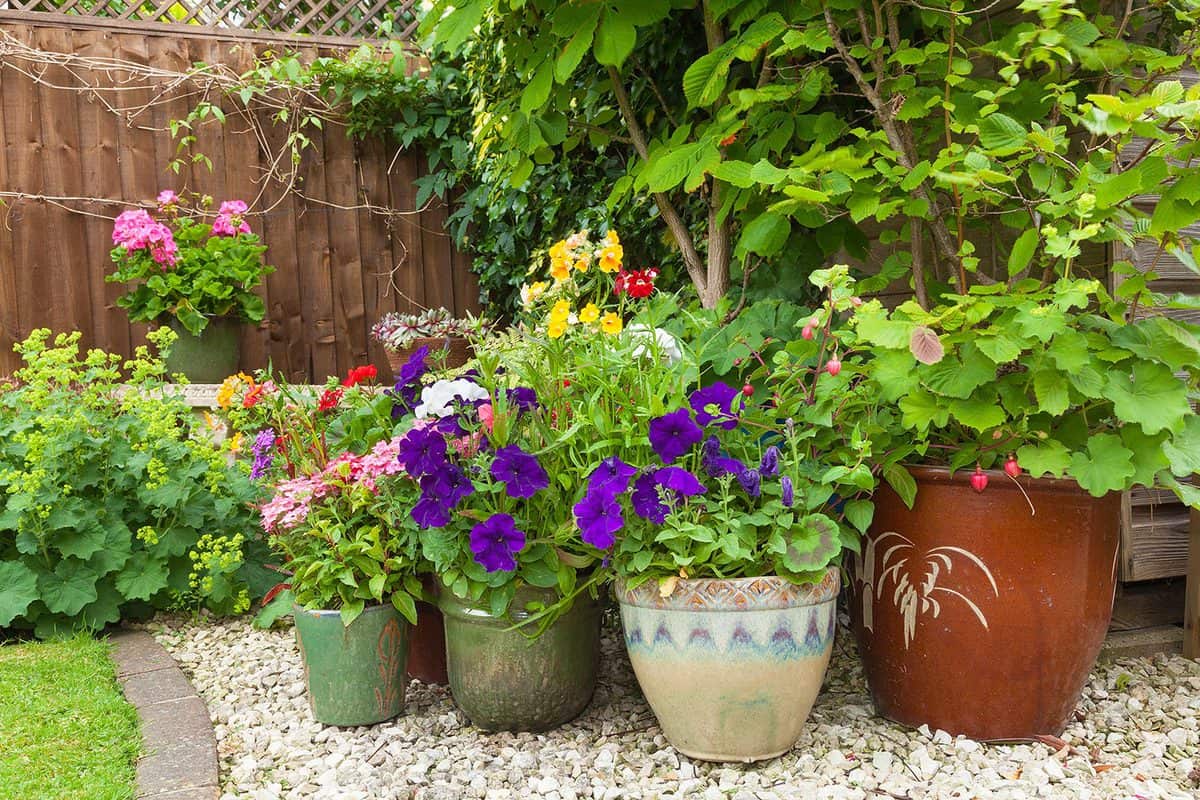
The way you stage your container garden will depend on its size, the types of pots you have, and its overall layout. First, it's best to decide which plants and pots you want to be the garden's focal point. This will help you choose where to place them.
Should they go in the middle of the space? Or would they work better right at the entrance? You'll also want to ensure that the shorter pots and plants can be seen, so try not to arrange them behind taller plants and pots.
Lastly, consider the color and design scheme of the garden and the type of appeal you want it to have. For example, if you want to create a more modern feel, consider making intricate shapes and lines with your pots instead of your typical straight long rows.
Wrapping Things Up
Choosing the right color for your planters and pots may seem like an easy decision, but it's best to plan it out carefully. Consider the overall look of the garden, the planter's ability to retain heat, as well as the future location of the container. Once you've taken these factors into account, you'll be more equipped to make the best decision for your garden.
Before you go, be sure to check out our other posts:
When To Transplant Daisies [And How To]
How To Overwinter Hostas In Pots
Source: https://gardentabs.com/best-color-for-planters-and-pots/
0 Response to ""Why Are There So Many Blue Planter Pots Than Other Colors ""
Post a Comment